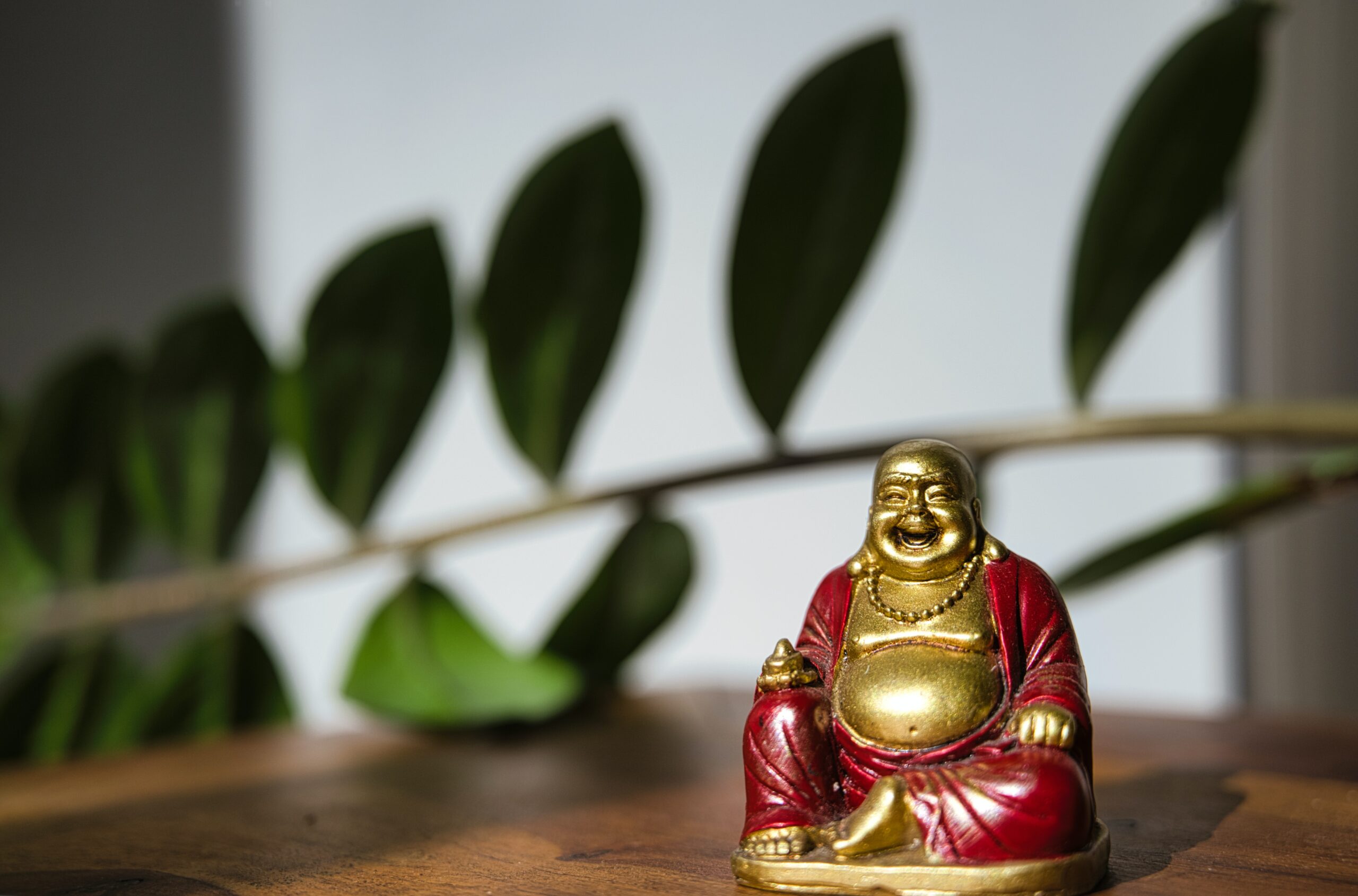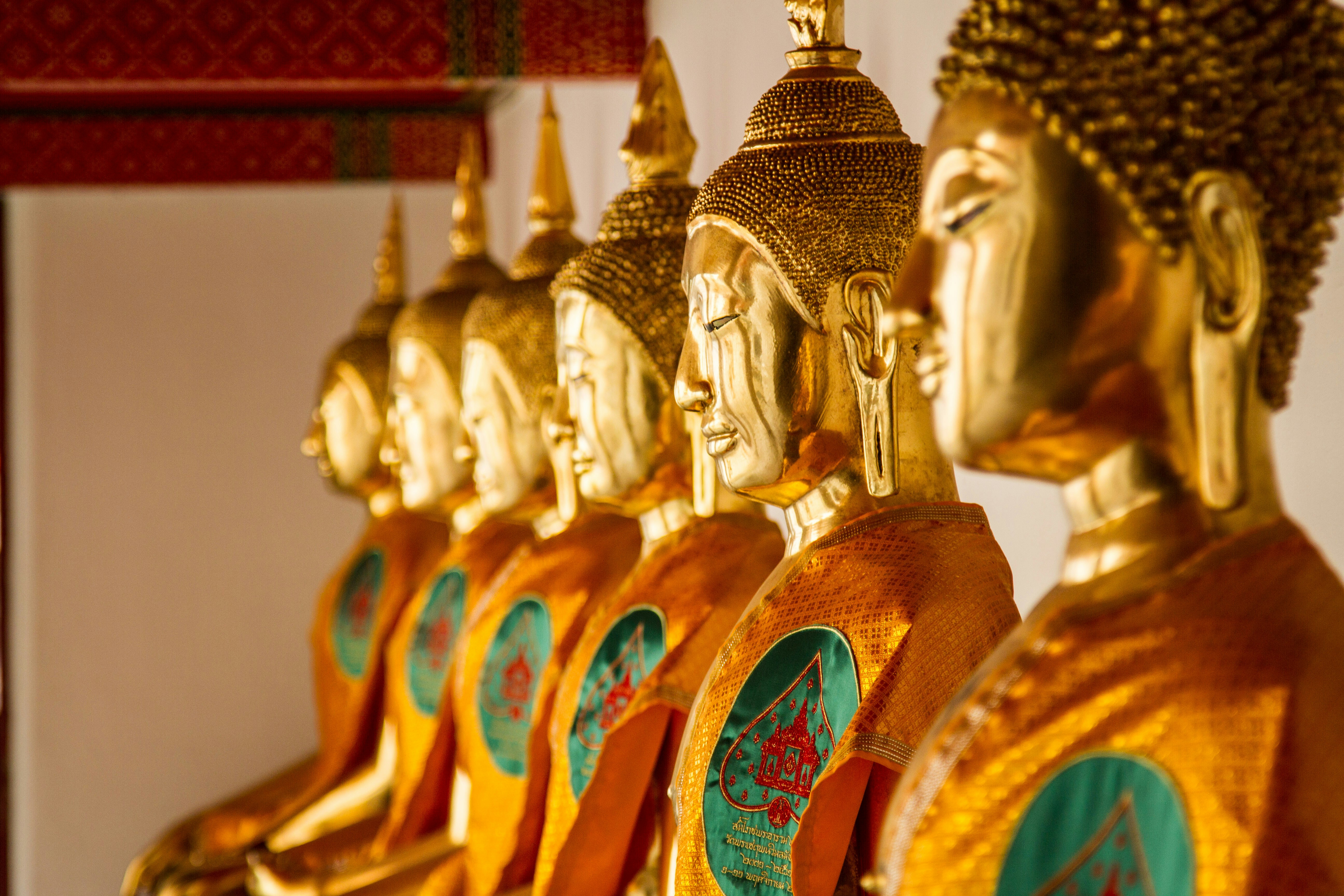Situated on the picturesque island of Koh Samui in Thailand, the majestic Big Buddha stands tall as an iconic symbol of spirituality and serenity. With its sheer size and intricate design, the statue amazes and captivates every visitor who sets foot on this enchanting destination. The article unveils the history, significance, and awe-inspiring beauty of the Big Buddha, inviting readers to embark on a journey of discovery and enlightenment.
Getting to Koh Samui
Arriving at the Big Buddha
Koh Samui, a tropical paradise located in the Gulf of Thailand, attracts visitors from all over the world with its stunning beaches, vibrant culture, and rich history. One of the must-visit attractions on the island is the Big Buddha, a majestic monument that stands proudly on the northeastern coast of Koh Samui. To reach this iconic landmark, travelers have various transportation options available to them.
Reaching the island of Koh Samui
Before embarking on a journey to the Big Buddha, travelers first need to reach the island of Koh Samui. Luckily, Koh Samui is well-connected to major cities in Thailand and neighboring countries. The island has its own international airport, Samui Airport, which offers direct flights from popular destinations such as Bangkok, Phuket, Kuala Lumpur, Singapore, and Hong Kong. Additionally, travelers can also opt to reach Koh Samui by ferry or speedboat from the mainland or nearby islands.
Modes of transportation to Koh Samui
Once travelers have arrived on the island, they can choose from various modes of transportation to get to the Big Buddha. Taxis and songthaews (shared pick-up trucks) are readily available at the airport and ferry terminals, offering convenient transport to the Big Buddha and other destinations on the island. Alternatively, travelers can rent a car or scooter to explore Koh Samui at their own pace. It is important to note that driving in Thailand requires an international driving permit.
Finding transportation to the Big Buddha
Finding transportation to the Big Buddha is relatively easy due to its popularity among tourists. Many tour agencies and hotels on the island offer organized tours or shuttle services to the Big Buddha. These guided tours not only provide transportation but also offer insightful information about the history and cultural significance of the monument. Travelers can also use ride-hailing apps or hire a private driver for a more personalized experience.
The History of the Big Buddha
Origins of the Big Buddha on Koh Samui
The Big Buddha, locally known as “Wat Phra Yai,” has a history that dates back to the early 1970s. It was built by the local community and Buddhist monks as a symbol of prosperity and good fortune for the people of Koh Samui. The idea of constructing a monumental Buddha statue emerged when a prominent monk envisioned a significant spiritual landmark for the island.
Significance of the Big Buddha to Koh Samui
Since its completion, the Big Buddha has become an iconic symbol of Koh Samui and holds great significance to the local community. The statue represents the island’s strong Buddhist heritage and serves as a place of religious worship for both locals and visitors. It is believed that paying respects to the Big Buddha brings good luck and blessings, making it a popular destination for spiritual pilgrimages.
Construction of the Big Buddha
The construction of the Big Buddha was a community effort that involved the participation of local residents, Buddhist monks, and generous donations from individuals and businesses. The statue, which stands at an impressive height of 12 meters, was meticulously crafted using concrete and covered with gold leaf to give it a radiant appearance. The construction process took several years to complete and was officially unveiled to the public in 1972.
Exploring the Big Buddha Temple
Overview of the Big Buddha Temple
The Big Buddha Temple, or Wat Phra Yai, encompasses not only the awe-inspiring statue but also a temple complex that offers visitors a glimpse into the rich Thai Buddhist culture. As visitors approach the temple, they are greeted by a grand staircase flanked by mythical guardian statues. Upon reaching the top, they are treated to a breathtaking panoramic view of the surrounding area and the turquoise waters of the Gulf of Thailand.
Impressive architectural features
The Big Buddha Temple showcases impressive architectural features that reflect the traditional Thai temple design. The main prayer hall, or “ubosot,” is adorned with intricate carvings and colorful murals depicting Buddhist teachings. The temple complex also houses several smaller shrines and pagodas, each housing various Buddha statues and religious relics. The meticulous attention to detail in the architecture and artwork is a testament to the craftsmanship and devotion of the artisans involved.
Exploring the surrounding area
Beyond the temple complex, the area surrounding the Big Buddha offers visitors a chance to immerse themselves in the natural beauty of Koh Samui. The tranquil surroundings are perfect for moments of quiet contemplation or a leisurely stroll. In addition, visitors can explore nearby temples, such as Wat Plai Laem, which is famous for its giant Guanyin statue and elaborate decoration. The serene beaches in the vicinity also provide a perfect spot to relax and soak up the sun.
Historical artifacts and exhibits
Within the temple complex, visitors can find a collection of historical artifacts and exhibits that provide insights into the island’s cultural and religious heritage. These exhibits showcase ancient Buddha statues, religious scriptures, and relics from different periods, allowing visitors to delve deeper into the history and significance of Buddhism on Koh Samui. Guided tours or audio guides are available to enhance the learning experience and provide a deeper understanding of the exhibits.
Cultural Significance of the Big Buddha
Importance of Buddhism in Thailand
Buddhism plays a significant role in Thai culture, and the Big Buddha stands as a testament to the country’s deep-rooted religious traditions. With the majority of Thai people being Theravada Buddhists, the religion permeates all aspects of society and serves as a guiding force for moral values, social structures, and daily life. Visiting the Big Buddha offers an opportunity to witness firsthand the spiritual devotion and reverence that Thai people have towards Buddhism.
Symbolism of the Big Buddha
The Big Buddha holds symbolic significance beyond its physical presence. The statue, with its serene and benevolent expression, represents enlightenment, compassion, and inner peace – core tenets of Buddhist teachings. Its sheer size and elevated position on a hill make it a visible landmark from afar, symbolizing the island’s spiritual significance and serving as a guiding light for those seeking solace and spiritual awakening.

Religious rituals and practices at the temple
The Big Buddha Temple is an active place of worship, and visitors have the opportunity to observe and participate in various religious rituals and practices. Thai Buddhists often make offerings of flowers, incense, and candles as a sign of respect and gratitude. Visitors may also witness monks chanting prayers or engage in meditation sessions. It is essential to approach these rituals with reverence and observe proper etiquette to respect the sanctity of the temple and its religious practices.
The Majestic Statue of the Big Buddha
Description of the monumental Buddha statue
The centerpiece of the Big Buddha Temple is the enormous Buddha statue itself. Standing at a towering height of 12 meters, the statue depicts Lord Buddha in the traditional “subduing Mara” posture, where he is seated with his left hand resting on his lap and his right hand touching the ground. The sculpture exudes a sense of calm and tranquility, with intricate detailing that showcases the skill of the craftsmen who brought it to life.
Materials and techniques used in its construction
The construction of the Big Buddha statue involved a meticulous process using traditional materials and techniques. The foundation of the statue is made of reinforced concrete to provide stability, while the exterior is adorned with shimmering gold leaf, giving it a majestic and ethereal appearance. Skilled artisans meticulously applied the gold leaf layer by layer to ensure a flawless and durable finish, allowing the statue to withstand the test of time and the elements.
Size and proportions of the statue
The scale and proportions of the Big Buddha statue are awe-inspiring. With a height of 12 meters, the statue is an impressive sight to behold, especially when standing at its base, where visitors can appreciate the sheer size and magnificence of the sculpture. The proportions of the statue are carefully designed to create a harmonious and balanced form, conveying a sense of grace and serenity.
Photography and respectful behavior
Visitors are often captivated by the sheer beauty and grandeur of the Big Buddha statue, prompting them to capture the moment through photography. While photography is allowed, it is essential to do so respectfully and ethically. Visitors should refrain from inappropriate poses or behaviors that may be considered disrespectful. Additionally, it is important to be mindful of other visitors and not obstruct access to the statue or impede the religious practices taking place.
Views and Panoramas from the Big Buddha
Breathtaking scenic vistas from the temple
The elevated location of the Big Buddha Temple offers visitors breathtaking panoramic views of the surrounding area. From the temple grounds, visitors can marvel at the lush greenery, crystal-clear waters, and picturesque landscapes that stretch out in all directions. The sweeping vistas provide a sense of tranquility and a chance to appreciate the natural beauty that Koh Samui has to offer.
Observation deck and panoramic viewpoints
To enhance the viewing experience, the Big Buddha Temple provides an observation deck and several designated viewpoints strategically placed around the temple grounds. These areas allow visitors to capture uninterrupted views of the coastline, neighboring islands, and the stunning sunsets that paint the sky with vibrant hues. The observation deck also serves as an ideal spot for meditation or quiet reflection, surrounded by the serene ambiance of the temple.
Sunset and sunrise photography opportunities
The Big Buddha Temple is renowned for its stunning sunset and sunrise views, creating an ideal setting for photographers and nature enthusiasts. As the sun begins to set or rise over the Gulf of Thailand, the sky transforms into a kaleidoscope of warm colors, providing a magical backdrop for capturing memorable photos. Whether witnessing the peaceful dawn or the fiery sunset, time spent at the Big Buddha during these golden hours promises a sensory experience that is truly captivating.
Visiting the Big Buddha Temple Complex
Opening hours and admission fees
The Big Buddha Temple is open to visitors daily from 8:00 AM to 6:00 PM, allowing ample time to explore the temple complex and enjoy its serene surroundings. While there is no entrance fee to visit the temple, donations are greatly appreciated to support the upkeep and maintenance of the site. These donations contribute towards the preservation of the temple and its cultural significance for future generations.
Guided tours and audio guides
For those seeking a deeper understanding of the history and cultural significance of the Big Buddha, guided tours and audio guides are available for a more enriching experience. Knowledgeable guides provide insights into the symbolism behind the various structures and artifacts within the temple complex, offering a fascinating insight into Thai Buddhism and the local community. Audio guides, available in multiple languages, offer a flexible and informative alternative for self-guided exploration.
Etiquette and dress code for visitors
When visiting the Big Buddha Temple, it is crucial to observe proper etiquette and dress code to show respect to the place of worship and its religious significance. Visitors should dress modestly, covering their shoulders and knees, as a sign of respect. It is also customary to remove shoes before entering temple buildings. Being mindful of noise levels, refraining from touching artifacts, and following the guidance of temple staff ensure a peaceful and harmonious visit for all visitors.
Nearby Attractions and Activities
Exploring the surrounding area of the Big Buddha
The Big Buddha Temple is situated in a vibrant area of Koh Samui that offers a range of attractions and activities for visitors to explore. The immediate vicinity of the temple is dotted with small shops and stalls selling local handicrafts, souvenirs, and delicious street food. Taking a leisurely stroll around the area provides an opportunity to immerse oneself in the local culture and interact with the friendly residents.
Visiting the Wat Plai Laem Temple
Just a short distance from the Big Buddha Temple complex lies Wat Plai Laem, another noteworthy temple on the island. This beautifully ornate temple is home to a striking statue of Guanyin, the Goddess of Compassion and Mercy, whose image towers over the lily-covered lake. The intricate details and vibrant colors of the temple’s architecture create a captivating sight and offer visitors a chance to learn more about the unique blend of Thai and Chinese Buddhist traditions.
Relaxing on the nearby beach
To complement the cultural exploration, visitors can take a short trip to one of the nearby beaches to relax and unwind. One such beach is Bang Rak Beach, a picturesque stretch of pristine sand that offers calm waters perfect for swimming and sunbathing. Other nearby beaches, such as Choeng Mon Beach and Chaweng Beach, also provide a range of water sports and beachside amenities to suit different preferences.
Sampling local cuisine and souvenir shopping
No visit to Koh Samui would be complete without savoring the delectable local cuisine on offer. From mouthwatering seafood dishes to flavorful curries and tropical fruit delights, the island is a culinary paradise. The area surrounding the Big Buddha Temple boasts numerous restaurants and street food stalls where visitors can indulge their taste buds in the vibrant flavors of Thailand. Additionally, the nearby shops and markets offer a wide variety of souvenirs and handicrafts, allowing visitors to bring a piece of Koh Samui’s charm back home.
Experiencing Local Festivals at the Big Buddha
Visiting during the Songkran Water Festival
One of the most vibrant and celebrated festivals in Thailand is Songkran, the Thai New Year festival. This festival takes place in mid-April and is marked by lively water fights and joyous celebrations. The Big Buddha Temple is known to be a popular gathering place during Songkran, as locals and tourists come together to participate in the festivities and seek blessings for the year ahead. The temple is adorned with colorful decorations and becomes a vibrant hub of music, dance, and water play.
Loy Krathong and Yi Peng Lantern Festival
Another enchanting celebration that takes place in Thailand is the Loy Krathong and Yi Peng Lantern Festival, held during the full moon of the twelfth lunar month. This festival is a magical spectacle as thousands of lanterns are released into the night sky and Krathongs, small floating vessels adorned with candles and flowers, are set afloat on rivers and lakes as offerings. The Big Buddha Temple becomes a captivating setting for participants to make their wishes, enjoy traditional performances, and immerse themselves in the enchanting atmosphere of the festival.
Other annual events and celebrations
Throughout the year, the Big Buddha Temple hosts various other events and celebrations that provide opportunities for visitors to experience Thai culture in all its vibrancy. These events include religious ceremonies, cultural performances, and traditional processions, allowing visitors to witness and participate in the lively traditions of Koh Samui. From chanting monks to traditional Thai dance performances, the energetic and joyful atmosphere of these events promises a unique and memorable cultural experience.
In conclusion, the Big Buddha of Koh Samui stands as both a majestic landmark and a spiritual haven, offering visitors a chance to immerse themselves in the rich cultural heritage of Thailand. With its awe-inspiring architecture, panoramic views, and cultural significance, the Big Buddha Temple is a must-visit destination for those seeking a deeper understanding of Thai Buddhism and the enchanting beauty of Koh Samui. Whether marveling at the monumental Buddha statue, exploring the temple complex, or partaking in local festivals, a visit to the Big Buddha is sure to be a memorable and enlightening experience for all.



